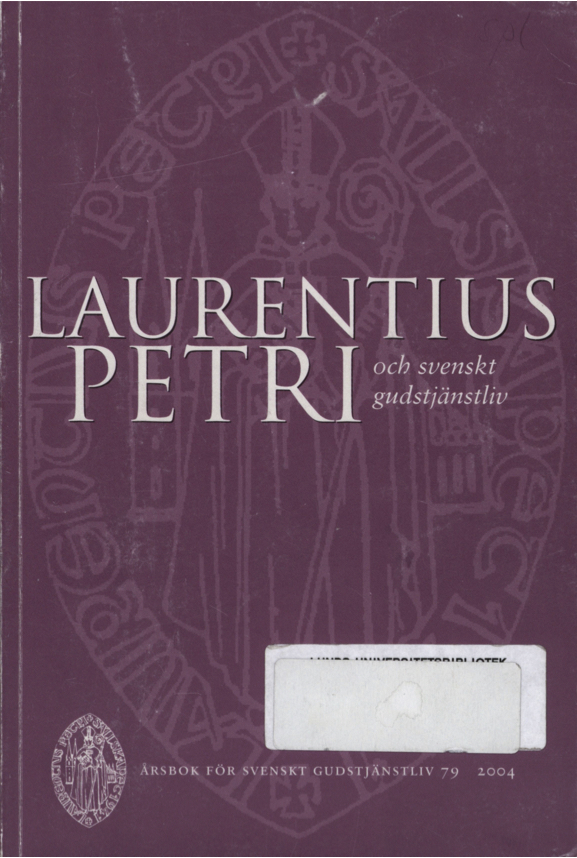Laurentius Petri, gudstjänstbruken och sakramentsfromheten
Abstract
An important part of Laurentius Petri’s writings deals with liturgical matters. In different polemical situations he discusses the principles behind various liturgical changes introduced by the reformers, the order of the reformed mass, the theology of the Eucharist and its consequences for popular piety.
Ecclesiastical polity and liturgical uses »under the Pope» were, he says, of three kinds: (i) necessary practices, which may be revised if required; (2) adiafora, i.e. traditions which may be retained if they are not associated with errors of faith or practice; (3) intolerable practices, which must be discarded. This standpoint, which characterised the Swedish reformation as a whole, meant that many medieval traditions which were regarded as belonging to the second category were tolerated, while those which fell into the third category were scrupulously extirpated.
In order to gain a clear idea of liturgical practices in the Swedish reformation, reformed liturgical texts must be related to practices which we can assume were inherited from the medieval church. The Medieval Latin breviary was shortened by exclusion of material which clashed with reformation ideas. In churches and especially in cathedrals, as part of clerical education, the major hours continued to be celebrated publicly on Sundays and feasts. They were also said privately by priests on weekdays. Thus the liturgy of the hours, in a macaronic version (Swedish and Latin mixed), formed a natural part of the liturgical life of the Swedish church well into the seventeenth century. Similarly, the medieval mass was reformed by translation of the ordinary into Swedish and the retention of Latin for other texts. Its »ceremonies» were to a large extent retained. The sermon had already in the Middle Ages been followed by prayers for church and world and a confession of sins; these texts were simply revised. From the point of view of the congregation, then, there was considerable continuity from the medieval to the reformed liturgy.
The relatively well-ordered transformation of the liturgy in Sweden was largely due to the retention of the medieval provincial council and diocesan synod. Little evidence of these meetings has survived, but according to Laurentius Petri they were necessary elements of church polity.
The Lutheran concept of the Real Presence led to the retention in Sweden, throughout the sixteenth century, of the elevation of the host at mass. Adoration of Christ in the sacramental species was accepted during (but not outside) mass. Both the Real Presence as such and devotions to it were defended by Laurentius Petri. This continuing practice probably contributed to a sustained popular loyalty to the faith and liturgy of the medieval church.
Late medieval sacramental piety was expressed primarily by prayers and gestures, not communion, and largely took place outside mass. This tended to dissolve the connection between the Eucharist as sacrament of the Church, mysterium unitatis, and the sacramental presence of the body and blood of Christ. Calvinism picked up the one thread, by rejecting the Real Presence and emphasizing Holy Supper as a sign of the mystical union between the Church and Christ, while Lutheran popular tradition picked up the other thread in strongly emphasizing the sacramental presence and individual reception. Where did the Body of the Church go in Lutheranism, the Sacramental Body in Calvinism? The late medieval matrix in fact not only coloured theology and practice in the Reformation period, aspects of it are even today conserved in Lutheran theology through its rather one-sided doctrine of the Eucharist.
Downloads
Publicerad
Nummer
Sektion
Licens
© författarna, Laurentius Petri Sällskapet för svenskt gudstjänstliv samt Artos & Norma bokförlag. Det är tillåtet att kopiera och använda material ur Svenskt Gudstjänstliv för forskningsändamål om källan anges. För övriga ändamål kontakta respektive artikelförfattare samt förlaget. Särskilda restriktioner kan gälla för bildmaterial.


